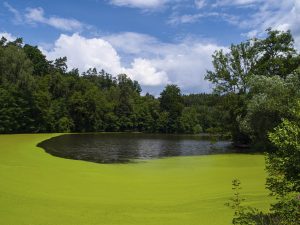2015 Water Institute Projects Study Vernal Pools, Water Treatment & Algae Blooms in Lakes
 Each year the Maine Water Resources Research Institute (WRRI) funds projects that further knowledge of the State’s water resources. Three projects are being funded in 2015 that range in focus from the water flow puzzle of vernal pools to the deconstruction of an algae outbreak to a novel fix to a difficult drinking water problem.
Each year the Maine Water Resources Research Institute (WRRI) funds projects that further knowledge of the State’s water resources. Three projects are being funded in 2015 that range in focus from the water flow puzzle of vernal pools to the deconstruction of an algae outbreak to a novel fix to a difficult drinking water problem.
The Water Institute is part of the Senator George J. Mitchell Center for Sustainability Solutions, which has a mission to produce knowledge and link it to actions that meet human needs while preserving the planet’s life-support systems.
The Titanium Fix
Today, people eat blueberries for reasons other than taste. Health experts have preached their benefits for years, along with other fruits and vegetables rich in color. It’s because they contain antioxidants, which fight disease-causing free radicals in the body.
Okay, take that common knowledge and reverse it. That’s how scientists working on a new WRRI project believe they can help solve a problem with drinking water coming from Lake Auburn.
See, the water, many complain, tastes and smells like fish and sometimes cucumber.
“In a water treatment system, unlike in the human body, free radicals can be really, really good because they attack the living cells of many toxic organics we are trying to get rid of,” said Aria Amirbahman, Professor of Civil and Environmental Engineering. “In this case, we hope they can help degrade the presence of these taste and odor causing compounds.”
Amirbahman and students will try to augment the Auburn Water District’s current UV light disinfection system with titanium coated glass plates. Though the UV system successfully eliminates many harmful compounds, it can’t degrade the algae-born chemicals that make the water taste bad in some cases. The problem stems from a growing algae bloom in Lake Auburn that is caused by the increased presence of phosphorous in the water.
When the plates are placed over UV lights, they activate a cascade of free radicals, which help destroy the taste and odor compounds as well as some viruses. If it works, the fix is very low cost, Amirbahman said, unlike the construction of a sophisticated filtration system that could cost millions.
“People equate taste and odor with water quality. That’s really important,” Amirbahman said. “Even if some of these compounds don’t make anyone sick, they’re not acceptable.” See more on this story
